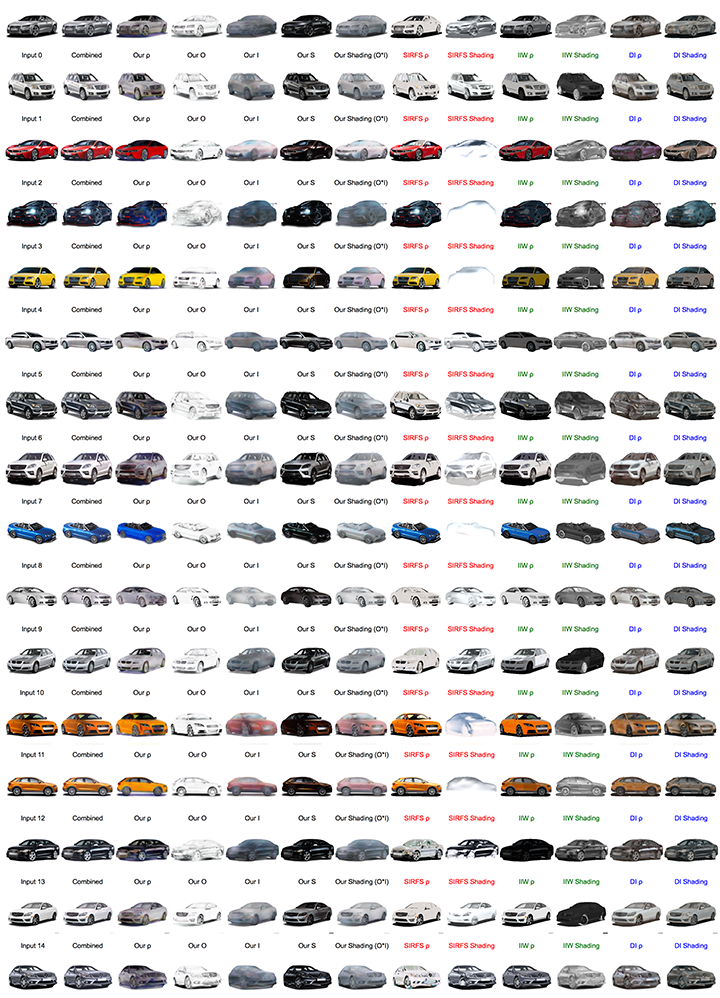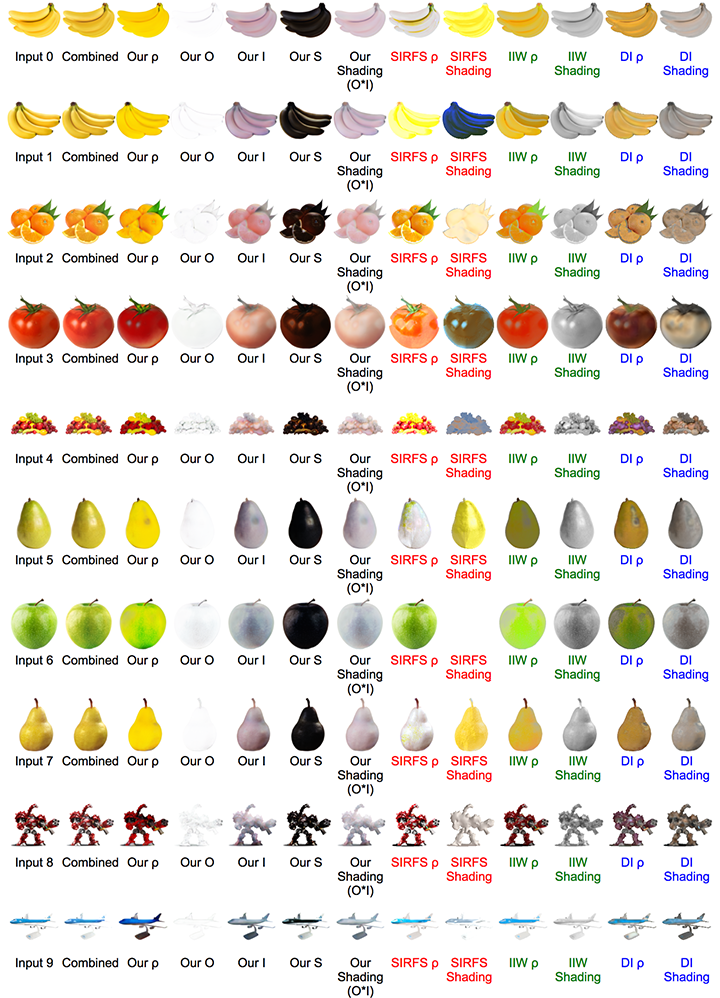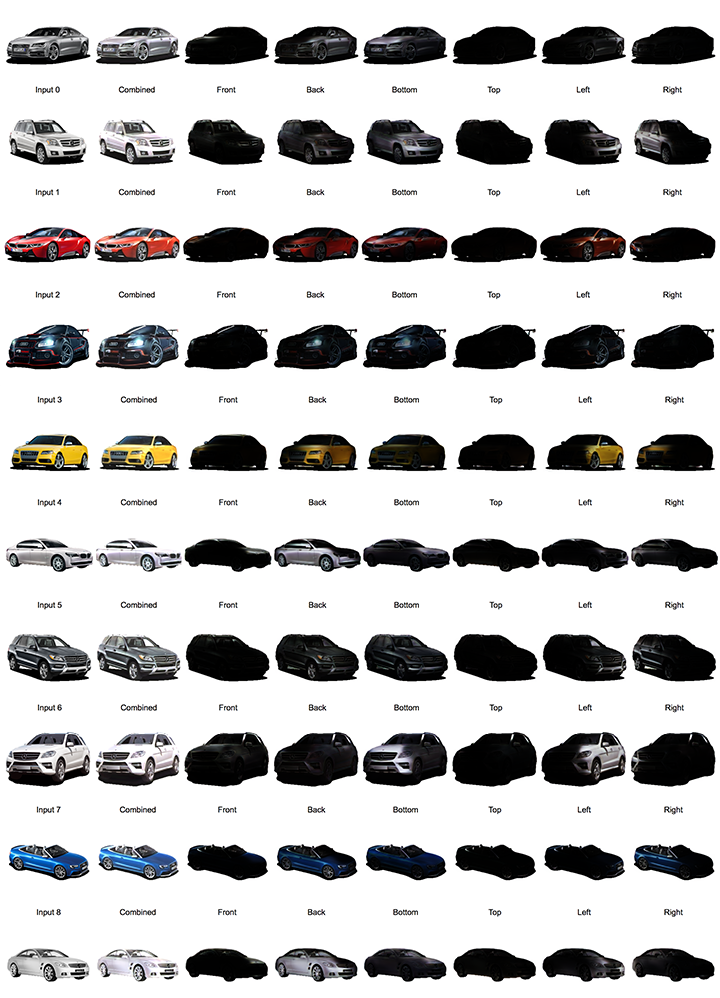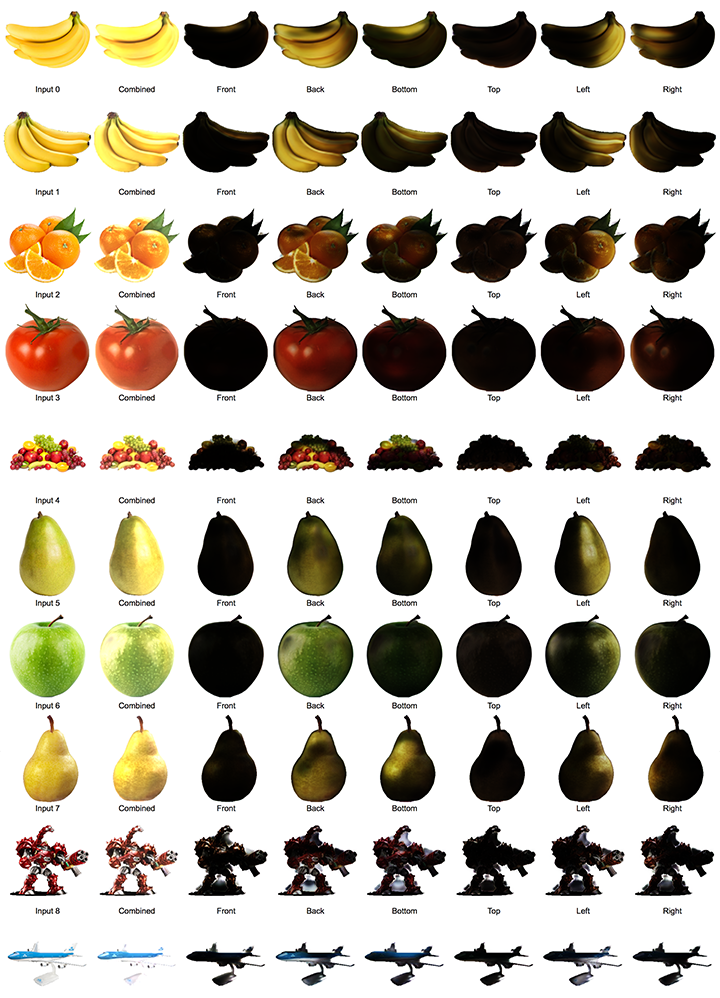Plausible Shading Decomposition For Layered Photo Retouching
- Carlo Innamorati
- Tobias Ritschel
- Tim Weyrich
- Niloy J. Mitra
University College London
ArXiv 2017
Abstract
Photographers routinely compose multiple manipulated photos of the same scene (layers) into a single image, which is better than any individual photo could be alone. Similarly, 3D artists set up rendering systems to produce layered images to contain only individual aspects of the light transport, which are composed into the final result in post-production. Regrettably, both approaches either take considerable time to capture, or remain limited to synthetic scenes. In this paper, we suggest a system to allow decomposing a single image into a plausible shading decomposition (PSD) that approximates effects such as shadow, diffuse illumination, albedo, and specular shading. This decomposition can then be manipulated in any off-the-shelf image manipulation software and recomposited back. We perform such a decomposition by learning a convolutional neural network trained using synthetic data. We demonstrate the effectiveness of our decomposition on synthetic (i.e., rendered) and real data (i.e., photographs), and use them for common photo manipulation, which are nearly impossible to perform otherwise from single images.






